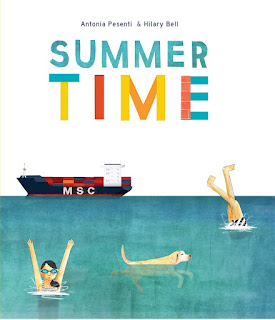The issue of rhyme in picture books has been on my mind. I can't go into any details here but this will be a topic I return to in 2023! Rhyme can be done well but it can also be done very badly. So it was timely that a friend shared this brilliant blog post with me from Picture Book Den. Here are a few quotes that resonated with me.
How to write rhyme - it takes heaps of practice:
- You pick every word with consideration. You edit your own work ruthlessly and tirelessly. If there even might be a better alternative, you chuck out your favourite line and try a new one.
- You keep all of the following in mind at every stage: plot, character, sense and logic, age appropriateness, commercial appeal, rhythm, timing, accent and pronunciation, syllables, stresses, emotional arcs, story beats, universality, originality, overall word count, word count per page, page turns, potential changes of scene in the illustrations.
- A skilled writer will not let the rhyme lead them. They will not remain so wedded to a line that they sacrifice sense, rhythm, logic — and the rest.
- A skilled writer will grab the reins and force the story to work, and work flawlessly, so that the rhymes are so neat, so carefully chosen and constructed that you barely even notice they’re there.
All of this leads me to my Picture Book for today (Day 28) - Where's the baby? by Pat Hutchins. Take a look at the Pat Hutchins web site - it is delightful.
The rhyme in this book is perfect. Here are a few examples:
"The mixture for the chocolate cake, that Ma was just about to bake, was tipped on the table and spilled on the floor. There were sticky fingerprints on the door."
"The scarf Ma was knitting for Uncle Fred had been unravelled all over the bed. Wool wiggled and curved across the floor, and they followed the wiggles out of the door."
Other masters, a small sample, of authors who produce perfect rhymes in their picture books include Julia Donaldson; Bill Martin Jr; Dr Seuss (of course); Alan Ahlberg; Lynley Dodd; Kes Gray; and Pamela Allen.
Reasons to include rhyming in picture books - the best ones - into your reading routine with your young child or class. One serious reason and one important reason (FUN):
Rhyming is important to learning. The ability to recognise rhyme is important to phonemic awareness – that is the ability to identify and to change the sounds within words, in both spoken and written language.
Exposure to rhyme also helps children to develop listening and thinking skills, and vocabulary and comprehension skills, and despite all of that learning potential, rhyming picture books are often just GREAT fun to read – with silly story lines and fun with language.
Try to find some of these. Just a tiny sample set:








No comments:
Post a Comment